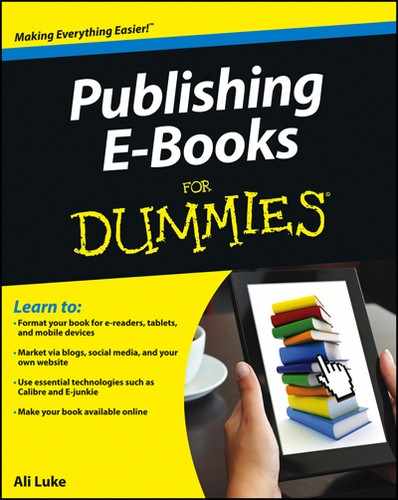Keeping Paragraphs Short and Clear
Unless you’re writing literary fiction or an academic textbook, keep paragraphs straightforward and to the point. Your readers may be viewing your e-book on their computer screens (which is more tiring on the eyes than paper is), on small e-reader devices, or even on their mobile phones. Short, clear paragraphs make for easy reading.
When you’re editing, keep an eye out for overly long paragraphs, and see whether you can split them in two:
![]() In fiction, short paragraphs can help increase the tension, and a paragraph break can indicate a pause or the passage of time.
In fiction, short paragraphs can help increase the tension, and a paragraph break can indicate a pause or the passage of time.
![]() In nonfiction, paragraph breaks help emphasize important points: The first sentence of a paragraph should generally introduce its main point. Read only the first sentence of every paragraph in your manuscript to see whether they provide a rough summary of your e-book; if they do, chances are good that you’re starting and stopping your paragraphs in the right places.
In nonfiction, paragraph breaks help emphasize important points: The first sentence of a paragraph should generally introduce its main point. Read only the first sentence of every paragraph in your manuscript to see whether they provide a rough summary of your e-book; if they do, chances are good that you’re starting and stopping your paragraphs in the right places.

 Of course, you can go too far with this technique. A string of one-sentence paragraphs might work in a blog post, but in an e-book, it’s likely to look odd, and the text may seem to read as disjointed and abrupt. Unless you’re writing experimental text or short paragraphs are part of your distinctive style, try to find a happy middle ground. Give the reader an engaging, even immersive, experience — carefully constructed paragraphs help you do that.
Of course, you can go too far with this technique. A string of one-sentence paragraphs might work in a blog post, but in an e-book, it’s likely to look odd, and the text may seem to read as disjointed and abrupt. Unless you’re writing experimental text or short paragraphs are part of your distinctive style, try to find a happy middle ground. Give the reader an engaging, even immersive, experience — carefully constructed paragraphs help you do that.